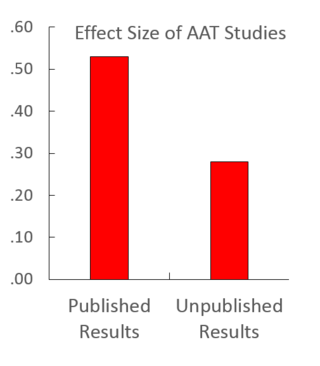Career
Does Animal-Assisted Therapy Really Work?
What clinical trials reveal about the effectiveness of four-legged therapists.
Posted November 17, 2014 Reviewed by Abigail Fagan
You hear a lot these days about dogs who alleviate Post Traumatic Stress Disorder, horses who cure kids with ADHD, and dolphins who can relieve depression. These and other forms of Animal Assisted Therapy (AAT) have become widely accepted by both the public and professionals. My local hospital has an active animal-assisted therapy program. Dozens of clinicians listed in the Psychology Today Therapy Directory incorporate animal therapy into their practice, and Psych Today bloggers have extolled the virtues of animal therapy (for examples, see here, here, and here.)
The idea that interacting with animals can heal our broken minds and bodies is certainly appealing, particularly for those of us who love pets. But is there a mismatch between the media coverage of AAT and the evidence that these therapies actually work? To answer this question, I recently surveyed the research literature on the effectiveness of AAT. I was surprised by what I found.
The Good News
AAT enthusiasts will be happy to learn that the overwhelming majority of published studies have reported that animals make excellent therapists. For example, Maggie O’Haire of Purdue University reviewed 14 clinical trials on the effects of AAT on children suffering from autism spectrum disorders (here). Together, these studies measured 30 different outcomes variables. The results were impressive. All of the studies found that AAT was effective. Indeed, children with autism who underwent AAT showed, in stat-speak, “statistically significant” improvements on 27 of the 30 outcomes measures.
Other researchers have found similar patterns of results in their examination of animal-assisted therapy studies. Erika Friedmann and Heesook Son reviewed 28 AAT studies published between 1997 and 2009 (here). The studies involved a wide variety of disorders including Alzheimer’s disease, schizophrenia, developmental disabilities, and Down’s syndrome. Amazingly, all 28 of the studies reported that interacting with therapy animals produced beneficial results. More recently, neuroscientist Lori Marino, the executive director of the Kimmela Center for Animal Advocacy, found that 26 of 28 AAT studies published between 2005 and 2011 reported positive outcomes in patients undergoing animal therapy (here).
Now the Bad News: Big Problem #1
These results sound great. But are they too good to be true? Unfortunately, when it comes to animal-assisted therapy studies, two problems loom large.
The first is that most of the clinical trials on the effectiveness of animal-assisted therapy are so methodologically flawed that their conclusions cannot be trusted. Therapies involving horses are a good example. In a recent article in the Journal of Clinical Psychology, investigators led by Michael Anestis of the University of Southern Mississippi analyzed all of the published clinical trials on equine-assisted therapy. They found that in 12 of the 14 studies the sample sizes were too small to produce reliable results, and 8 of the studies also lacked no-treatment control groups. In only one of the trials were subjects randomly assigned to treatment conditions, and none of them controlled for the effects of simply being exposed to a new experience or for unconscious bias on the part of the researchers. Based on these problems, Anestis' team recommended that equine therapy be put on hold until well-designed studies demonstrate its effectiveness.
Lori Marino found that nearly all of the 28 AAT studies she examined were seriously flawed. She says there is little evidence that the improvements seen in animal therapy studies are due to the presence of the animal, as opposed to, say, interacting with the animal's sympathetic handler. Dr. Anna Chur-Hansen and her colleagues found that poor research methods have compromised the validity of clinical trials on the impact of animal visitations on hospitalized children. And Japanese researchers found that all of the randomized clinical trials on AAT conducted to date are so methodologically flawed that they do not meet the accepted minimum standards for inclusion in “meta-analyses” (here). (Note: Meta-analysis is a statistical tool that allows combining the results of different studies.)
Animal-Assisted Therapy Research Deficiencies
Among the most common flaws in AAT studies are:
- Lack of a non-treatment control group.
- Insufficient numbers of subjects.
- No controls for effects of novel experiences (e.g., swimming with dolphins).
- No written manual spelling out the treatment procedures (important for standardization and replication).
- No use of “blind observations” to control for unconscious bias on the part of the researchers.
- Reliance on self-reports rather than objective measures.
- Lack of long-term follow-up studies.
- Putting a positive spin on negative results (e.g., “While interacting with the therapy dogs did not actually decrease the patients’ symptoms, the participants reported that they enjoyed interacting with the animals.”).
- Cherry picking (only presenting the results for variables that worked)
Big Problem #2: The File Drawer Effect
A second major problem with the scientific literature on animal-assisted therapy is the “file drawer effect.” This is the tendency for experiments that find positive results to be published while experiments in which treatments do not work are rarely published. As a result, in many areas of science, published findings are heavily biased toward positive results. This is not a trivial issue. A recent study by the Food and Drug Administration found that 91% of published clinical trials on the effectiveness of antidepressant drugs reported positive results. However, when the results of non-published trials were included in the analysis, antidepressants were found to be effective in only 51% of the studies.
This bias toward the publication of only positive results also slants the AAT efficacy literature. Take a study conducted by the psychologist Dr. Alisa Greenwald. For her doctoral dissertation, Greenwald investigated the impact of a therapeutic horseback riding program on 81 boys with emotion problems ranging from depression to ADHD to PTSD. She found that participation in equine-assisted therapy had no impact on the children’s self-esteem or frustration tolerance. Indeed, children who were highly attached to the therapy horses had higher levels of depression and anxiety. But the study was never published.
For a systematic demonstration of the file drawer effect in the AAT literature, I turned to a 2007 study by Julie Nimer and Brad Lundahl of the University of Utah. They conducted a meta-analysis of 49 AAT studies, including 12 unpublished doctoral dissertations. For each study, they calculated the “effect size” of participating in animal-assisted therapy. (I won’t go into the details of how effect sizes are calculated. You just need to know that .20 is considered a minor effect of the experimental treatment, .50 is medium sized, and .80 is viewed as a large effect.) Using their results, I calculated the average effect sizes of the unpublished and the published AAT studies. The results are shown in the graph below. The average effect size for the published studies was a healthy .53. On the other hand, the average effect size in the unpublished studies was a much more anemic .28, about half as large as in the published clinical trials. (An effect size of this magnitude means that if 100 people were to get animal-assisted therapy, roughly 9 of them will be better off for the experience while the other 91 would have done just as well by staying home and hanging out on Facebook.)

The Hype Versus the Evidence
Alan Beck, the Director of the Center for the Human-Animal Bond at Purdue University, is a pioneering researcher who helped establish the field of anthrozoology. In 1984, along with his colleague Aaron Katcher, he published the first review of studies on AAT. In that paper, Beck and Katcher warned about the sorry state of research purporting to demonstrate the effectiveness of animals as therapists. They argued that investigators needed to carefully separate the feel-good temporary recreational benefits of interacting with animals from the long-term clinical benefits of AAT. And they were particularly concerned that too many enthusiastic investigators were asking “How can I demonstrate the therapeutic effect of pets?” rather than the more appropriate question, “Do pets have a therapeutic effect?”
Unfortunately, despite the media hype and 30 years of research on therapy dogs, dolphins and horses, Beck and Katcher’s warning is nearly as true today as it was in 1984. However, things are improving on the research front. In 2008, the Waltham Center for Pet Nutrition and the Eunice Kennedy Shriver National Institute of Child Health and Human Development initiated a grant program that has provided over 9 million dollars for research related to human-animal relationships. Already these funds have begun to pay off in terms of better AAT studies. (See, for example, this study by Maggie O'Haire and her colleagues on the impact of Guinea pigs on the social behaviors of kids with autism.)
But the truth is that we still don't know the answer to Lori Marino’s question: “How important is the animal in animal-assisted therapy?”
***
For my earlier Psychology Today post on dolphin-assisted therapy, click here.
For an excellent guide to designing qualitative and quantitative studies related to AAT, see this paper by Stern and Chur-Hansen.
References
Some important articles on the effectiveness of AAT
Anestis, M. D., Anestis, J. C., Zawilinski, L. L., Hopkins, T. A., & Lilienfeld, S. O. (2014). Equine‐related treatments for mental disorders lack empirical support: A systematic review of empirical investigations. Journal of Clinical Psychology,70, (12), 1115-1132.
Beck, A. M., & Katcher, A. H. (1984). A new look at pet-facilitated therapy. Journal of the American Veterinary Medical Association, 184(4), 414-421.
Chur-Hansen, A., McArthur, M., Winefield, H., Hanieh, E., & Hazel, S. (2014). Animal-assisted interventions in children's hospitals: A critical review of the literature. Anthrozoös, 27(1), 5-18
Kamioka, H., Okada, S., Tsutani, K., Park, H., Okuizumi, H., Handa, S., Oshio, T., Park, S., Kitayuguchi, J., Abe, T., Honda, T., & Mutoh, Y. (2014). Effectiveness of animal-assisted therapy: A systematic review of randomized controlled trials. Complementary Therapies in Medicine, 22(2), 371-390.
Marino, L. (2012). Construct validity of animal assisted therapy and activities: How important is the animal in AAT? Anthrozoös, 25(Supplement 1), 139-151.
Stern, C., & Chur-Hansen, A. (2013). Methodological considerations in designing and evaluating animal-assisted interventions. Animals, 3(1), 127-141
Sources of Images - AAT http://www.oakland.edu/pace/animalassistedtherapy




